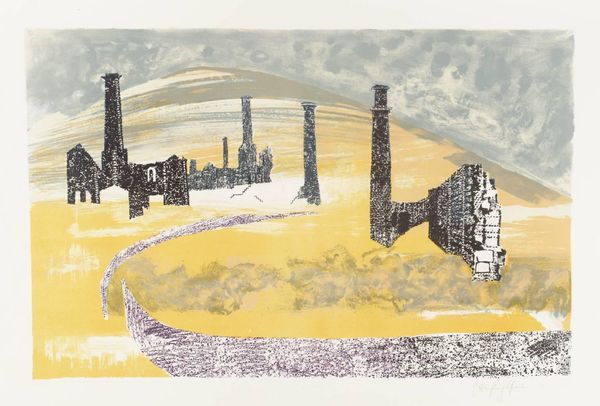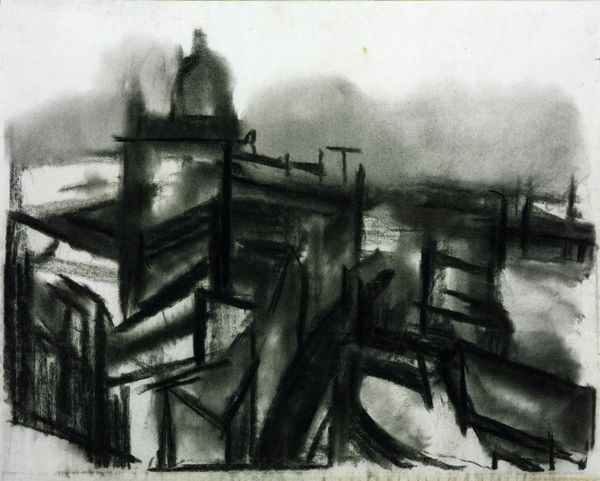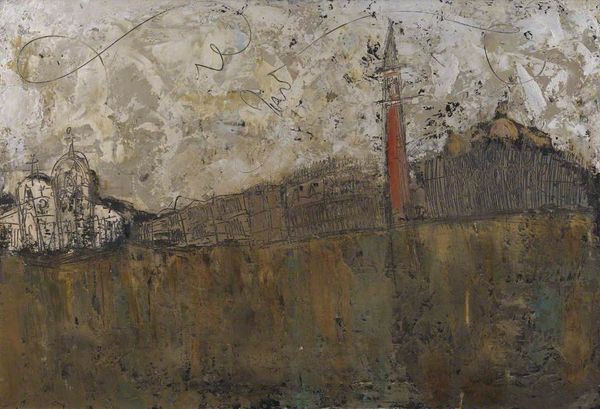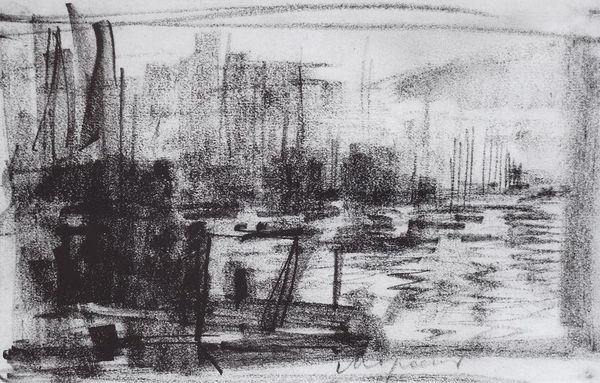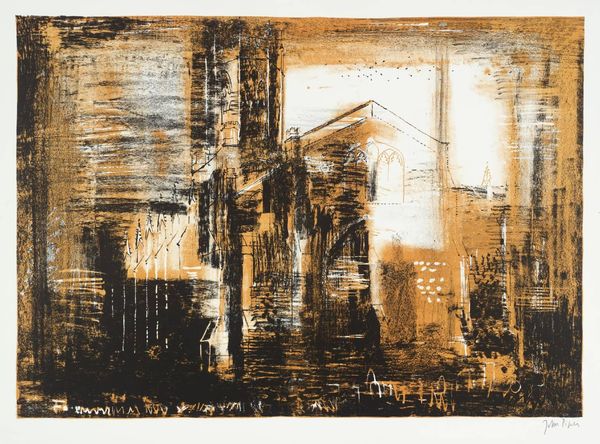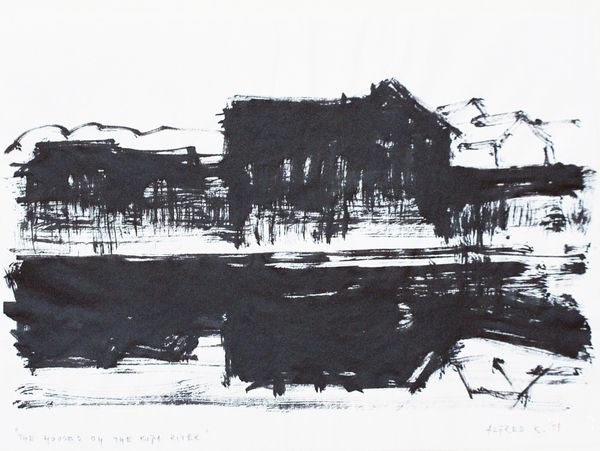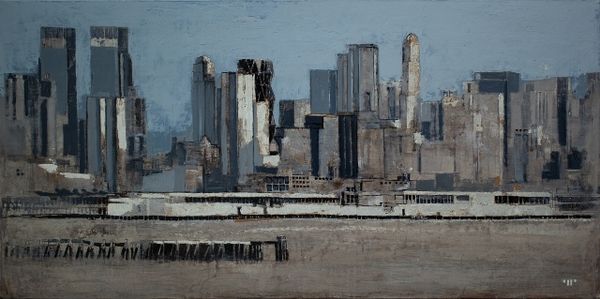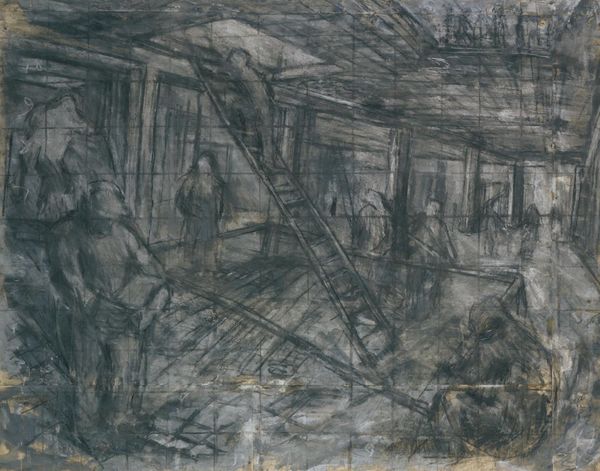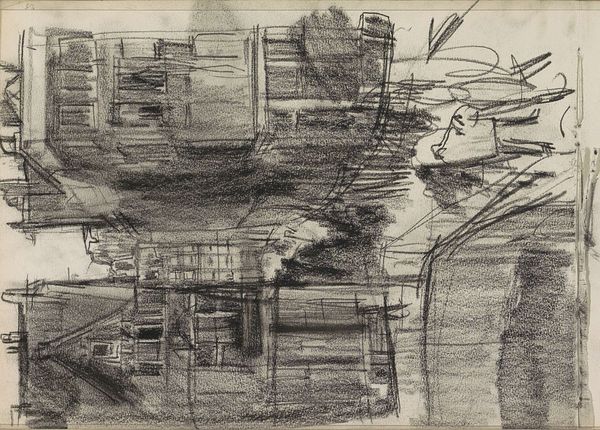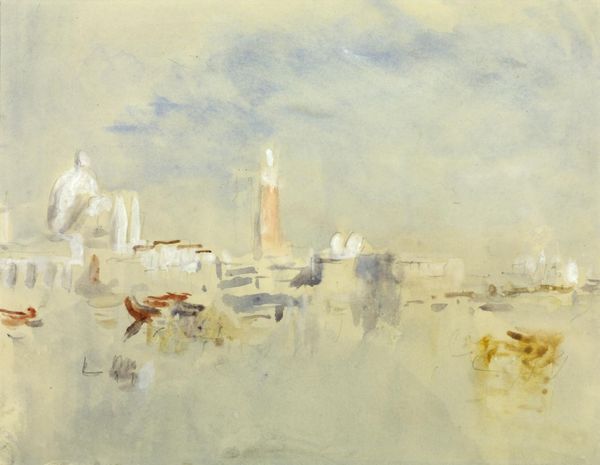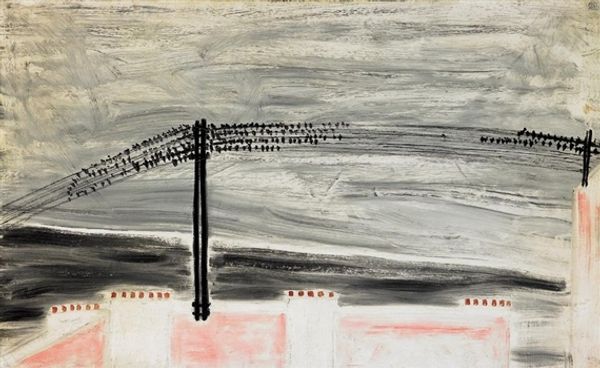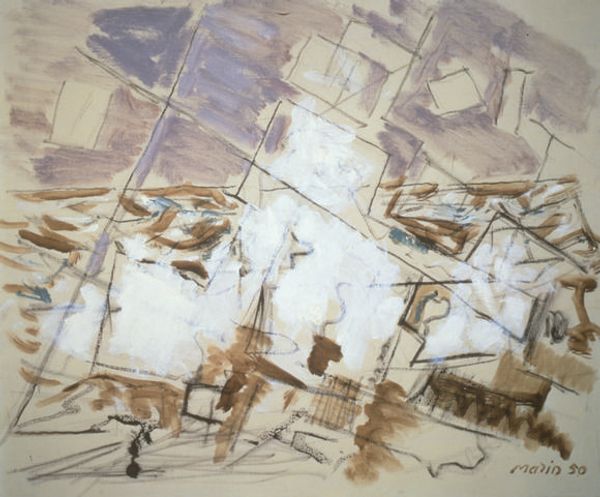
Dimensions: support: 394 x 571 mm
Copyright: CC-BY-NC-ND 4.0 DEED, Photo: Tate
Curator: Anthony Gross's "Final Stages of the German War: Krupp’s Works at Essen" presents a striking image rendered with ink and watercolor. The piece resides in the Tate Collections. Editor: The drawing immediately evokes a sense of desolation. The skeletal industrial forms loom under a sickly yellow sky, like monuments to a dying age. Curator: It's interesting how Gross, an official war artist, chose to depict not the heat of battle, but its aftermath. The Krupp Works, a key industrial complex for the Nazi war machine, stands as a symbol of immense power brought to ruin. Editor: The skeletal appearance resonates deeply. It’s as if the artist captured the very soul of a system stripped bare, its false promises exposed through the literal and symbolic dismantling. Curator: Consider the recurring motif of the circle: the gasometers, the suggestion of an orbital system, and the implications of continuous production, reflecting the cyclical nature of war. Editor: In a way, this cyclical imagery echoes the idea of cultural memory—how societies process trauma and attempt reconstruction. It suggests that the scars of war can be both physical and deeply ingrained. Curator: Indeed, the visual elements prompt us to remember and reflect on the impact of historical events. Editor: It is a stark reminder that our present is always built on the ruins of the past, and it's critical to learn from the fallen empires of yesterday.
